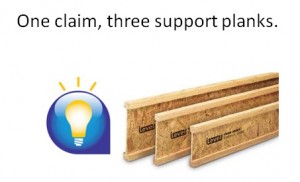An office products brand strategy.
I once wrote a brand plan for an office products company. And, an impressive global company it was. A good deal of the background discovery reading contained references to technology. If spring-loaded hanging folders were considered technology once upon a time, they certainly aren’t today. The word technology is owned by the digital people.
My first job was to disabuse the company of being in the technology business and get them to celebrate the fact that they were in the “organizing business.” So an element of the brief had to do with the notion that the company really studied the science of organization. Then they codified and mapped it. Applauding company engineers and R&D people as “organizational artisans” made everyone feel good about themselves – rather than envious of Silicon Valley or Bell Labs.
For the brand support planks (used to prove the brand claim) many brand planners would have gone the “quality” root — a much over-used strategy. Rather, I opted for durability. As a marketing word “quality,” like “technology,” has been watered down. It’s a toxic brand planning word.
I can’t publically share the brand Idea for this global brand or the other support planks but am happy to discuss (offline) the thinking and ultimate position. For a deeper dive write steve at whatstheidea. Suffice it to say, the big honkin’ observation was to get this company back into the office and out of TechCrunch. Peace.





